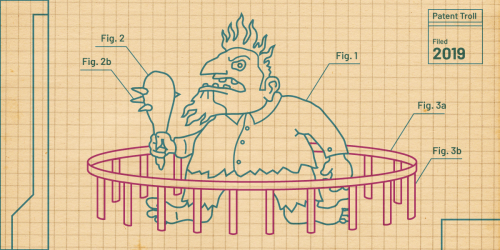Ending months of anticipation, yesterday the U.S. Supreme Court finally issued a ruling in Bilski v. Kappos, a business method patent case that, many hoped, would give the Court an opportunity to sharply limit these much maligned patents, or at least offer clear guidance on how business method patents are to be judged in the future. Unfortunately, the Court did neither one.
By way of background, Bernard Bilski and Rand Warsaw applied for a patent on methods for hedging risks for commodities trading. The Patent Office rejected their patent application as covering an abstract idea not eligible for patent protection, under § 101 of the Patent Act. Bilski appealed to the U.S. Court of Appeals for the Federal Circuit (CAFC). The CAFC affirmed the Patent Office’s rejection of the patent application. The CAFC adopted a “machine-or-transformation test” to judge patentability: a patent applicant “may show that a process claim satisfies § 101 either by showing that his claim is tied to a particular machine, or by showing that his claim transforms an article.”
Bilski then appealed to the Supreme Court. EFF joined an amicus brief arguing that patents should only be granted for technological processes. Such technological processes advance the development, understanding, or application of a machine, manufacture, or composition of matter.
The Supreme Court affirmed the CAFC’s rejection of Bilski’s patent application, but with different reasoning. The Court merely agreed that Bilski sought to patent an abstract idea, and held that such abstract ideas were unpatentable.
A majority opinion authored by Justice Kennedy agreed that the Federal Circuit’s “machine-or-transformation” test at least “is a useful and important clue, an investigative tool,” for patentability, but not the sole or exclusive test. The five-justice majority opinion also rejected a rule that all business methods are unpatentable. Four justices would have held that methods of doing business are unpatentable (Justices Stevens, Ginsburg, Breyer and Sotomayor).
By watering down the CAFC’s “machine-or-transformation” test, the Supreme Court regrettably failed to provide guidance in the future about business method patents. For example, suppose a patent claim is not clearly unpatentable as just an abstract idea, but it does fail the now-optional “machine-or-transformation” test. When will such a claim be patentable? The Court did not answer that question, or provide details about how to apply its “abstract idea” test.
In short, the ruling has done little to clean up the mess the CAFC helped created in 1998, when it decided State Street Bank & Trust Co. v. Signature Financial Group, and opened the doors to patents for novel methods of doing business. That ruling knocked patent law loose from its historical moorings and injected patents into business areas where they were neither needed nor wanted. The results had been nothing short of disastrous: a flood of patent applications for services like arbitration, tax-planning, legal counseling, charity fundraising, and even a “system for toilet reservations.” In its Bilski opinion, the CAFC tried to fix the problem by effectively overruling State Street. Yesterday’s ruling eroded the CAFC’s limits on process patents, and thus missed an opportunity to fix some of the problems with those patents.
Michael Barclay is an EFF Fellow.







